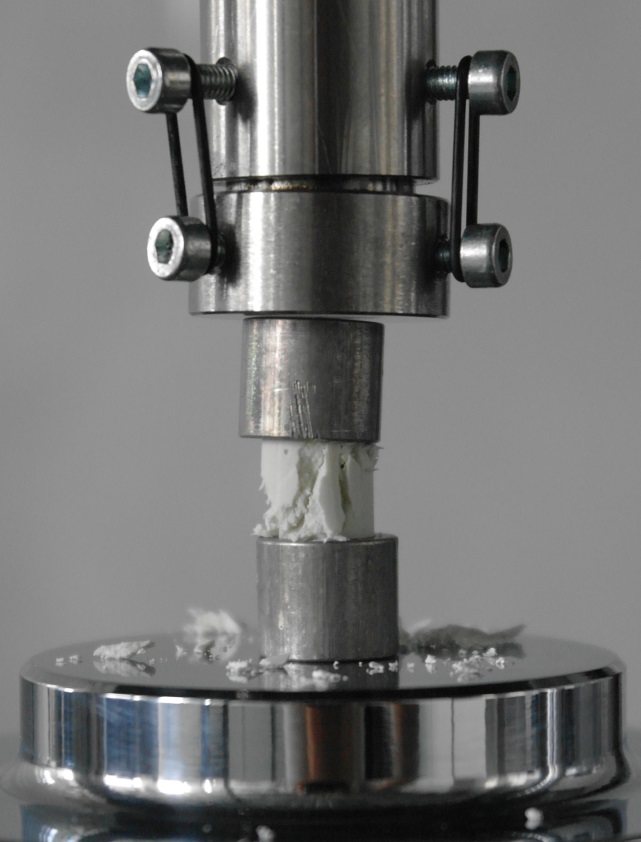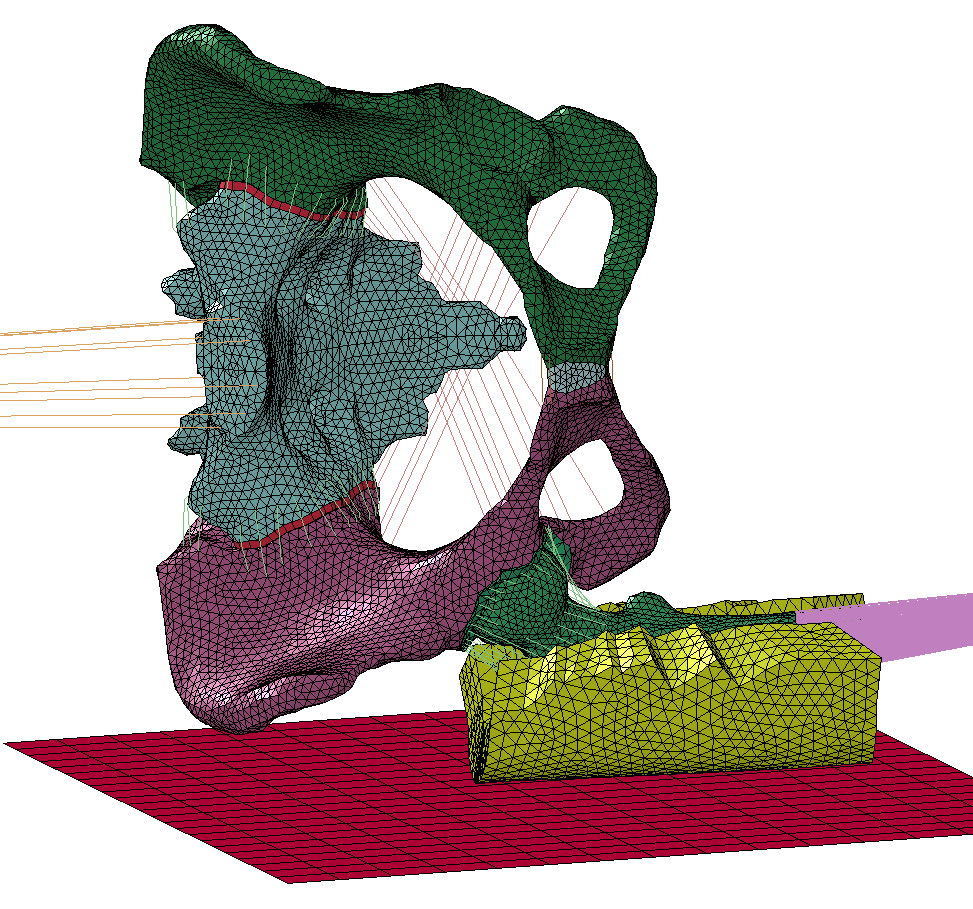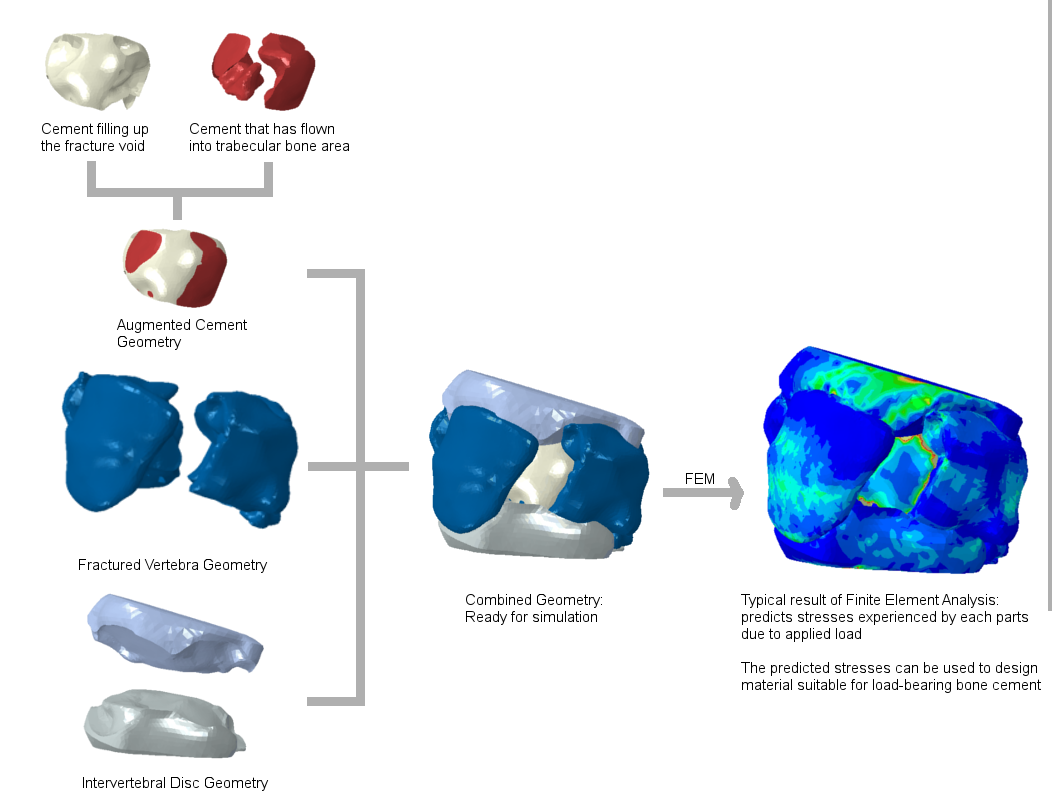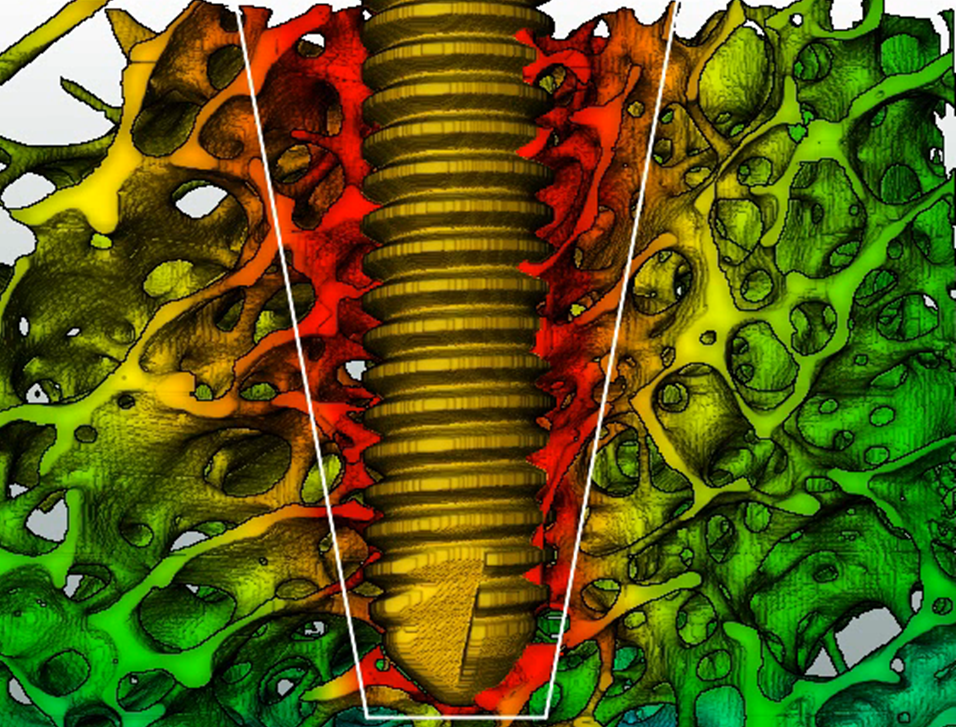Bone Pathologies and Treatment
Introduction
Bone related pathologies resulting from e.g. trauma or degenerative diseases are a major health problem all over the world. Aiming towards new or improved treatments we focus on gaining a better understanding of the cause and consequences of bone related pathologies. We do this through the use of computer simulations and experimental testing at the scale of the organ down to the tissue.
A central research theme in our work is the investigation of osteoporosis related fractures in the spine and the hip. Understanding what predisposes a bone to fracture helps us to identify patients at high risk and design early interventional treatment strategies. Using the state of the art in simulation techniques we predict the flow of biomaterials augmented into cancellous bone which allows us to compare the calculated risk of fracture for a given patient before and after treatment.
With these simulation tools we are also tailoring properties of biomaterials for treating different bone pathologies. By combining the use of high resolution imaging, experimental testing and large scale finite element analysis we are also studying methods to improve fracture fixation.
Projects
Ceramic bone cements for load bearing orthopedic applications
Bone fractures can require operative treatment, involving the use of fixation methods. However, operative treatments are associated with invasive procedures that generate high costs, prolonged recovery periods and the potential for a negative outcome.
What predisposes a hip to fracture?
Osteoporosis is a degenerative bone disease characterized by abnormally low bone mass, and is estimated to affect one in two women, and two in five men over 50 years old.
Towards optimal stabilization of complex vertebral fractures.
The spine supports trunk mobility, an upright posture and provides protection of the spinal cord.
Computational modelling of mechanical implant-bone interaction
In osteoporotic bone, implant stability and appropriate fracture fixation is limited by low bone quality.



